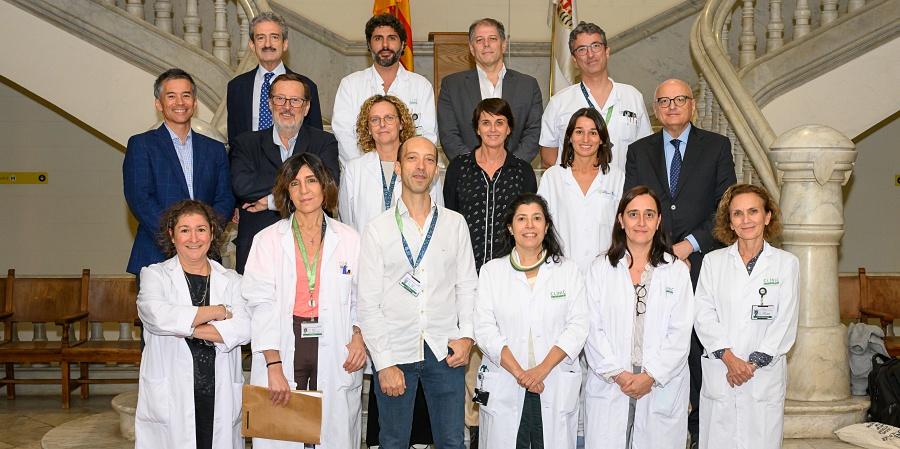Recent advances in immunotherapy and ablation options are targeting new directions in liver cancer
The Barcelona Clinic Liver Cancer (BCLC) group, promoted by the Clinic Barcelona Comprehensive Cancer Center – Hospital Clinic, IDIBAPS and the University of Barcelona (UB) – has published a new version of the guidelines for the management of hepatocellular carcinoma (HCC).This updated immunotherapy.and integrates the latest advances in ablative options, thus strengthening the practice of a more structured and multidisciplinary therapy that considers clinical, personal and emotional factors.
The new document incorporates the latest scientific advances and maintains its role as a global reference for clinical decision-making.Additionally, it includes the CUSE concept (Complexity-Uncertainty-Subjectivity-Emotion), an innovative tool that helps clinical teams make decisions in HCC treatment that best suit each patient's situation.
Collaboration of international specialists in hepatology, general and digestive surgery...
The BCLC 2025 guidelines published in the "Journal of Hepatology" Dr., who is also a CIBER researcher on liver and gastrointestinal diseases (CIBEREHD). The clinic - directed by Maria Reig - coordinated by the Department of Liver Oncology (BCLC) of IDIBAPS and also has international partner scientific experts. Surgery, pathological anatomy, nursing, radiodiagnosis, medical and radiation oncology andstatistics.In addition, expert Xavier Marcet and Dr. Catherine Damico contributed to the creation of the CUSE concept, advising on their reference areas.
Hepatocellular carcinoma (HCC) is the most common type of liver cancer and usually occurs in people with chronic liver disease such as cirrhosis.Its treatment depends on several factors: the size and number of tumors, the state, condition of the liver and the presence of other conditions, as well as on factors that are not directly related to the tumor or the liver organ.In many cases, there is no particularly good option, which requires not only the available evidence for its approach, but also the individual characteristics of each patient and the context in which it is to be treated.
The new version of the BCLC guidelines contains significant improvements that reflect scientific and clinical advances in the treatment of liver cancer.One of the main innovations is the incorporation of new immunotherapy treatments that improve the survival of subjects with advanced HCC.It also includes the option of choosing different ablative options in very early HCC, such as radiofrequency, microwaves, EBRT, TARE or TACE.In addition, the updated manual presents ordered therapeutic options according to the best available level of evidence when there is no option that clearly improves survival.This facilitates the choice of treatment based on scientific data and enables the management of uncertainty in a structured way.
Another important change is the multidimensional approach.Although clinical decision-making always taken into account reasons beyond the tumor and the liver, until now the personal, social and emotional aspects are not systematic aspects are not systematic aspects are not systematic creation.What is new is that they are now explained and structured, allowing the decision to be prioritized and contextualized according to the individual patient.
What is the purpose of cse?
AGREED PREDICTIONS transfer the decision-making process to decision-making under uncertainty.Its name indicates four different actions:
• Complexity: The variety of clinical and personal factors that influence treatment decisions.
• Uncertainty: lack of definitive data in some scenarios and patient prognoses.
• Objectivity: Patient choice and value, as well as the interpretation of scientific data by a multidisciplinary team.
• Emotions: In addition to previous experiences, the disease affects feelings and decision-making processes
This approach allows the patient and medical team to participate in treatment selection together to arrive at the best decision for each case.“The inclusion of the CUSE model reinforces the BCLC guidelines’ evidence-based and values-based approach to medicine and has a direct impact on professionals and patients,” said Dr. Reig.
The update of the BCLC and the integration of the CUSE framework is a step forward in the direction of more personalized medicine adapted to current needs.It integrates rigorous scientific evidence with the clinical characteristics of each patient and promotes a structured decision-making process in multidisciplinary committees where the patient takes a more active role in determining treatment." Our goal with this update was to provide a guide that is not only based on the best available evidence, but also applicable to real-world clinical practice, taking into account the diversity of contexts and the perspective of each patient.
Reading reference:
Rigg M, Sandozzi-Zamparelli M, Voorn A, Remola J, Ferrer-Fabrega J, Borrell M, et al.BCLC strategy for predicting prognosis and recommending treatment: 2025 update. J Hepatol.2025;83(5):1234-1248.doi: 10.1016/J.JHEP.2025.10.020








